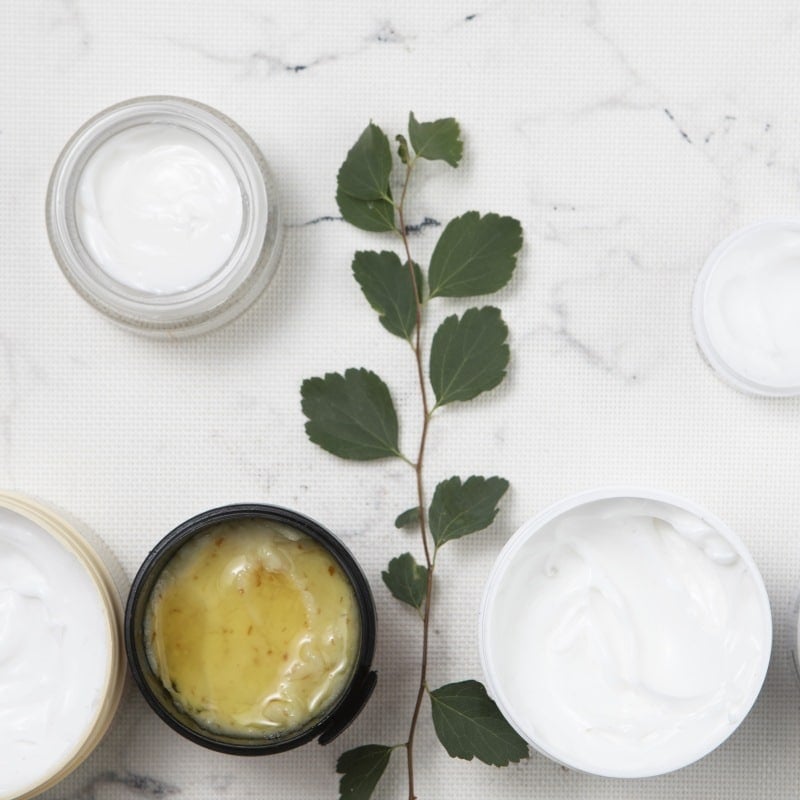
Creams and body lotions are daily necessities for skincare regimens. They are among the cosmetics category’s most exposed products, applied liberally over large body areas, frequently several times a day. Lotions and creams must adhere to stringent safety regulations due to their frequent use before being put on the market. To ensure that cosmetics are safe for human health, the EU Cosmetics Regulation (EC No 1223/2009) mandates that all cosmetics undergo a cosmetic product safety report (CPSR) before launch. Because body lotions and creams are leave-on and come into direct contact with the skin, this procedure is even more important. This blog post will discuss how to create a CPSR for body products that are hydrating and soothing, with an emphasis on emollients, fragrances, and high-exposure safety factors.
Why CPSR Matters for Hydrating & Soothing Body Products
The official document attesting to a cosmetic product’s suitability for its intended use is a safety report. It serves as the foundation for compliance with EU law and includes both technical data and scientific evaluation. The composition of ingredients, toxicological profiles, exposure estimates, and product testing results must all be included in the CPSR for body lotions. A lotion cannot be sold lawfully in the EU without this report, underscoring the importance of regulatory approval.
Body creams are leave-on cosmetics that stay on the skin for a long time, in contrast to rinse-off cosmetics. Additionally, they are used in large amounts, increasing the amount of ingredients that consumers are exposed to, including preservatives, emollients, and fragrance allergens. As a result, the safety evaluation needs to consider the cumulative effects of repeated use in addition to the concentration of each ingredient. Body lotions must have a complete CPSR with no gaps in safety documentation because regulators view them as high-exposure products.
The EU Cosmetics Regulation (EC No 1223/2009) requires the CPSR. While fragrance allergens are regulated in accordance with both EU thresholds and IFRA recommendations, safety assessors adhere to scientific guidelines such as the SCCS Notes of Guidance. Together, these regulations guarantee that all lotions and creams on the market are both safe to use and accurately labeled. In addition to protecting customers, this framework gives brands precise guidelines to follow when creating their product dossiers.
CPSR Part A: Cosmetic Product Safety Information
Full Ingredient Disclosure
A comprehensive list of ingredients, presented in both qualitative and quantitative terms, opens Part A of the CPSR. By making the entire formula clear to the assessor, this section serves as the basis for the safety assessment. Emollients like shea butter or mineral oil, humectants like glycerin, emulsifiers, preservatives, and fragrances are typically found on the ingredient list of body lotions. Supplier certificates of analysis are required for each entry to verify its identity, purity, and quality.
Physicochemical Properties and Stability
The final product’s physicochemical characteristics must also be recorded in the CPSR. For body creams, this entails documenting the product’s pH, viscosity, look, and smell, as well as demonstrating that these attributes don’t change over time. Because lotions that separate, oxidize, or alter pH can jeopardize safety and performance, stability testing is crucial. These tests show that from the time of production until the end of its expiration date, the product is reliable and safe.
Microbiological Quality and Packaging Interactions
Microbiological safety is a major concern because body creams are applied directly to the skin and may come into contact with the air while being used. To demonstrate that the preservative system can regulate microbial growth after the product is opened, challenge tests are necessary. Another important consideration is packaging. The CPSR must determine whether the lotion’s packaging materials interact with it in ways that could compromise safety, such as leaking chemicals or not shielding the formula from contamination. Thus, testing for packaging compatibility is a crucial component of Part A.
Emollients & Fragrances: Special Considerations
The Role of Emollients
Emollients are the main ingredient in lotions and creams, providing the calming and moisturizing effects that customers anticipate. Each has a unique safety profile and ranges from natural oils and butters to silicones and synthetic esters. Emollients’ toxicological profiles need to be carefully assessed because they frequently comprise a significant portion of the formula. Emollients can be used every day without causing irritation, sensitization, or other long-term effects thanks to a comprehensive safety evaluation.
Fragrance Components and Allergen Risks
Lotions with fragrances are more enticing, but there may be safety risks. 26 distinct fragrance allergens are required by EU law to be listed on product labels when their levels surpass certain thresholds. Together with proof of adherence to IFRA guidelines, these allergens need to be recognized and recorded in the CPSR. Fragrance allergens are one of the biggest compliance risks for body lotions, which are high-exposure leave-on products. Consumers are informed and allergen thresholds are respected when the safety report for cosmetic products is properly documented.
High-Exposure Implications
Body lotions are classified as high-exposure cosmetics because they are applied to large areas of skin and stay there for extended periods of time. Because of this, their CPSR is higher than that of goods like soaps and shampoos. Each ingredient’s cumulative exposure and margin of safety (MoS) must be determined by safety assessors, who must also account for usage frequency and concentration. This guarantees that applying the lotion more than once a day won’t cause it to go over safe limits.
Compared to other product types, safety assessors frequently advise additional testing layers for body lotions due to their elevated risk profile. These can include in-use testing to mimic actual customer behavior and prolonged stability studies in a range of temperature and humidity levels. The goal is to document the potential effects on safety of repeated applications in conjunction with elements such as perspiration, clothing contact, or exposure to the environment. Brands can show both regulatory compliance and a proactive commitment to the welfare of consumers by including these wider factors in the safety report for cosmetic products.
CPSR Part B: Cosmetic Safety Assessment
Exposure Assessment
The CPSR’s Part B uses scientific judgment to assess safety based on the data from Part A. Because consumers frequently use several grams of body cream per application, exposure assessment is especially important. The assessor determines the amount, frequency, and surface area of each ingredient’s skin contact. The product can be used as intended without going over safe exposure levels thanks to these calculations.
Toxicological Profiles and Safety Margins
Toxicological information, usually derived from databases, published research, and SCCS opinions, must be provided for each ingredient. To determine a margin of safety, safety assessors compare the estimated exposure to the no observed adverse effect level (NOAEL). This margin needs to be sufficiently large for emollients and preservatives used in high concentrations to safeguard all users, including those with sensitive skin or children. The foundation of the safety report for cosmetic products is this scientific assessment.
Labeling and the Role of the Responsible Person
Labels must give consumers clear warnings, ingredient lists, and usage instructions in accordance with the safety assessment. When threshold values are exceeded, allergens found in the safety assessment have to be listed on the label. The Responsible Person, a person or organization designated by the brand, is also responsible for making sure the Product Information File (PIF) and CPSR are correct and accessible for review. Legal responsibility for product safety in the EU market rests with the RP.
Practical CPSR Checklist for Body Lotions & Creams
There is a methodical procedure for creating a CPSR for body lotions and creams that guarantees nothing is missed. Brands should start by gathering supplier certificates of analysis and comprehensive formulation data. The product should then undergo stability and microbiological testing to demonstrate that it is safe for the duration of its life cycle. Fragrance analysis follows, in which allergen levels are meticulously compared to IFRA and EU thresholds.
Following the completion of these procedures, each ingredient is evaluated toxicologically, and exposure calculations are made to account for the high exposure, leave-on nature of the product. The Product Information File can be completed with this information, and a Responsible Person needs to be chosen to supervise adherence. The lotion or cream may then be lawfully marketed in the EU following the last step of notifying the product via the Cosmetic Products Notification Portal (CPNP). A more seamless process and a lower chance of delays or rejections are guaranteed when this checklist is followed.
Common Pitfalls to Avoid
Many brands underestimate how easy it is to make mistakes during the CPSR process. A common issue is failing to declare fragrance allergens when they exceed threshold levels, which can lead to regulatory rejection. Another frequent mistake is relying on weak preservative systems, which can allow microbial growth in a product that is applied directly to the skin. Packaging compatibility is also sometimes ignored, yet it is essential to confirm that the chosen container does not leach substances or compromise stability. Avoiding these pitfalls requires careful planning and a thorough safety assessment.
Frequently Asked Questions about CPSR for Body Lotions
Q1. Does each fragrance variant require its own CPSR?
Indeed. Because allergen levels and toxicological data can vary between formulas, even slight fragrance variations need their own CPSR.
Q2. In body lotions, what constitutes high exposure?
Leave-on products that are applied frequently and over large surface areas are referred to as high exposure. Because of their intended purpose, body creams fall under this category.
Q3. Is the CPSR process made simpler by natural emollients?
No. The same level of toxicological scrutiny that is required for synthetic ingredients must also be applied to natural ones. “Natural” does not imply that safety testing is not necessary.
Q4. For what duration are CPSR and PIF records required to be maintained?
After the final batch of products is put on the market, these documents must be kept on file for a minimum of ten years in accordance with EU law.
Q5. Does the EU permit animal testing?
No. In the EU, it is illegal to test cosmetics on animals. Instead, published toxicological data and alternative techniques are employed.
Conclusion: Building Safer, Compliant Body Lotions
Preparing a cosmetic product safety report for body lotions and creams is both a regulatory requirement and a safeguard for consumer health. By carefully evaluating emollients, fragrance allergens, preservatives, and packaging, brands can demonstrate that their products are safe for daily, high-exposure use. A well-prepared CPSR for body lotions not only ensures compliance with EC No 1223/2009 but also builds consumer trust in hydrating and soothing body products. With this structured approach, brands can move confidently from formulation to market launch, knowing their lotions and creams meet the highest standards of safety and transparency.
To learn more about how Certified Cosmetics can support your CPSR preparation and explore in-depth guidance on compliance, visit our CPSR service page and browse our latest cosmetics compliance blogs.

